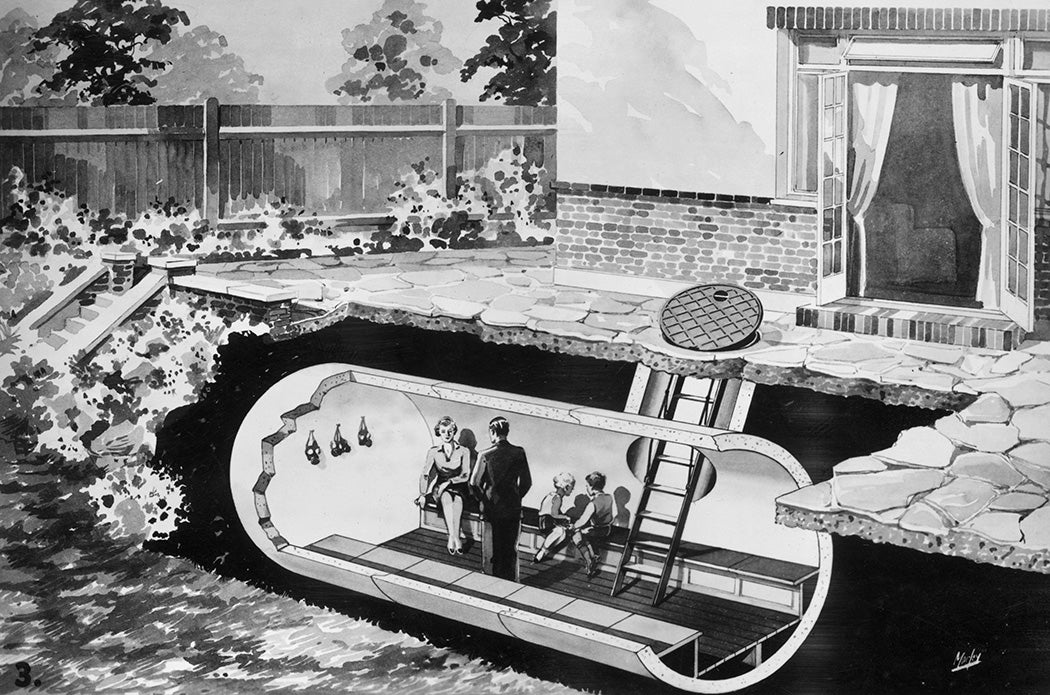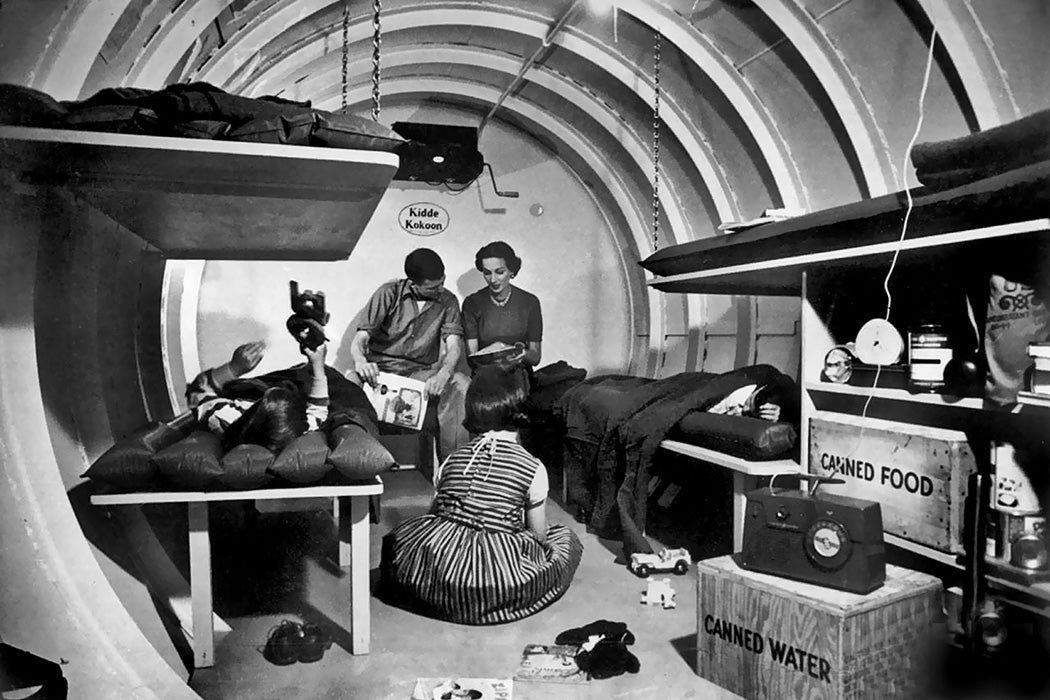Between climate change, the ongoing threat of nuclear weapons around the world, and the pervasive sense of political instability, there’s been a sharp uptick in recent years in the sale of luxury bomb shelters for the very wealthy. Some shelters feature gyms, swimming pools, and underground gardens. They’re a far cry from the classic fallout shelters of the 1950s and 1960s. As the design historian Sarah A. Lichtman writes, back then, families planning for the apocalypse often took a more homespun approach.
In 1951, with the Cold War emerging in the aftermath of World War II, President Harry S. Truman created the Federal Civil Defense Administration to provide protection for citizens in case of nuclear war. One option the government considered was building shelters all over the country. But that would have been incredibly expensive. Instead, the Eisenhower administration called for citizens to take responsibility for protecting themselves in case of nuclear attack.

In November of 1958, Lichtman writes, Good Housekeeping published an editorial titled “A Frightening Message for a Thanksgiving Issue,” telling readers that, in case of attack, “your only hope of salvation is a place to go.” It urged them to contact the government for free plans to make a shelter at home. Fifty thousand people did so.
As Cold War tensions grew in the early days of the Kennedy administration, the government distributed 22 million copies of The Family Fallout Shelter, a 1959 booklet offering step-by-step instructions for building a shelter in a family basement or in a hole dug in the backyard. “The desire to protect the imperiled home, long a bulwark of American frontierism and self-defense, now translated to staving off the physical and psychological devastation of nuclear attack,” Lichtman writes.
Weekly Newsletter
Lichtman’s thesis is that the idea of a D-I-Y shelter fit with postwar enthusiasm for home improvement projects, particularly in the growing suburbs. A typical basement shelter only required common materials, things that could be found at any hardware store: concrete blocks, ready-mix mortar, wooden posts, board sheathing, and six pounds of nails. Companies even sold kits including everything needed for the project. Often, it was presented as a good father-son activity. As Lichtman notes:
Fathers engaging in do-it-yourself were deemed to set “a fine example” for boys, especially at a time when society considered teenagers at high risk of juvenile delinquency and homosexuality.
Only three percent of Americans actually built fallout shelters during the height of the Cold War. Still, that represented millions of people. Today, shelter building seems to be a project for a much narrower segment of the population. That reflects much-reduced tensions over the possibility of a nuclear attack. But perhaps it also shows that, as inequality grows, even the hope of surviving apocalypse is now a luxury, rather than something society can expect middle-class families to be able to provide for themselves.







